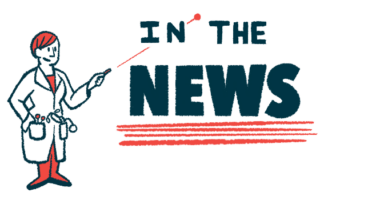I have a love-hate relationship with my port-a-cath
A port has been crucial to sustaining my health, but it's also been risky

Living with cystic fibrosis (CF) has required various hardware to be placed in my body, including a port-a-cath in my chest. This allows me to do blood draws and receive medication in the easiest way possible. Although my journey with this device has been like a roller coaster, I’m grateful it’s a viable option for my healthcare needs.
I began being hospitalized due to CF exacerbations when I was 19. That’s when I got my first peripherally inserted central catheter (PICC line) in my arm. Back then, the procedure was different than it is today. From my bedside, the nurse placed the PICC line in my arm without first conducting an ultrasound or an X-ray. My skin was sliced with a scalpel, and a 40-inch catheter was inserted that ran from my elbow, up my arm, and into the top of my heart. It remained in my body for two weeks while I received intravenous antibiotics. Before I was discharged, someone came in to pull the long piece of spaghetti-like tubing from my arm.
After several years of having long-term catheters, my arms got tired. Placing my last PICC line took two hours and was horribly painful. Despite using advanced technology including an ultrasound and an X-ray, the surgeon struggled to place the line in my arm. It kept getting stuck in my armpit due to scar tissue. That was on my birthday 10 years ago.
By early 2016, doctors had talked me into a permanent solution by surgically placing a port-a-cath in my chest, just above my right breast. This allowed the catheter to sit at the top of my heart, and I then had IV access readily available.
Unexpected complications
My port was placed prior to a double-lung transplant I received seven years ago, and the healing process after it was inserted wasn’t as smooth as I’d expected. Coughing was extremely painful. Given my severe lung disease, every cough felt like being punched from the inside out. So I suppressed my cough to alleviate the pain, but that caused a buildup of mucus in my lungs. I ended up back in the hospital for a round of IV treatments.
A few weeks after my port placement, it felt like an elephant was sitting on my chest, and my breathing was worse than normal. I couldn’t shake the feeling that something was wrong, so I went to the hospital emergency room. Test results quickly confirmed the presence of a pulmonary embolism and other blood clots throughout my chest, neck, and arms. I had to be placed on supplemental oxygen 24 hours a day as a result. It was terrifying.
I’d known there would be risk involved with the procedure, but it never occurred to me how high that risk actually was. I also didn’t realize that having a foreign object in my body would increase the risk to my health due to increased inflammation. But I needed venous access.
Lastly, it took a while for me to get used to seeing myself in the mirror with a port in my chest. To be honest, it looked like I had a third nipple. Seeing another deformity in a sensitive area of my body caused me unexpected grief.
My experience with having a port has been tumultuous. It’s brought enormous pain and some near-death experiences. But I’m grateful that it’s lasted nearly a decade. It’s been a lifesaver, even on this side of having a transplant.
Note: Cystic Fibrosis News Today is strictly a news and information website about the disease. It does not provide medical advice, diagnosis, or treatment. This content is not intended to be a substitute for professional medical advice, diagnosis, or treatment. Always seek the advice of your physician or other qualified health provider with any questions you may have regarding a medical condition. Never disregard professional medical advice or delay in seeking it because of something you have read on this website. The opinions expressed in this column are not those of Cystic Fibrosis News Today or its parent company, Bionews, and are intended to spark discussion about issues pertaining to cystic fibrosis.









Leave a comment
Fill in the required fields to post. Your email address will not be published.